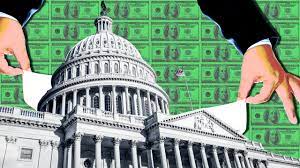With T-bill supply lagging behind the AuM (Assets Under Management) growth of government-only money market funds due to the ceiling, there should be an upward pressure on T-bill prices despite the RRP facility. The reason for this is that not all money market funds are eligible to participate in RRP. Also, it should be noted that there is a per counter party limit on RRP participation. This limit, however, can always be raised as the Manager of the Desk has remarked, so the main pressure on money market rates comes from institutions that aren’t eligible to earn the RRP rate.
Higher T-bill prices mean lower T-bill yields and thus lower repo rates. RRP-eligible money market funds, facing rates lower than that on the RRP facility, will consequently opt for participating in the RRP, leading to a higher RRP take-up. A higher RRP take-up means less reserves in the banking system as money market funds wire their funds to the RRP facility via commercial banks.
We know that the base money that commercial banks receive from QE operations already end up at the Fed’s RRP due to SLR constraints. As can be seen, more RRP take-up should lead to less reserves, which play an important role in large banks’ market-making ability in the global Dollar funding markets; that large banks have lower reserve balances is a potential catalyst for widening USD cross currency basis.
USD cross currency basis is the excess premium demanded for the USD leg of an FX swap. This occurrence is a clear deviation from the Covered Interest Parity (CIP) rule which states that the forward rate is determined by the interest rate differential of two given currencies. Deviations from CIP occur when there’s an excess demand for borrowing Dollars in exchange for other currencies as collateral and/or when there’s less supply of Dollars to prevent arbitrage in the FX swap market, a type of arbitrage that’s a byproduct of the cross currency basis.
Because entering into a forward rate contract becomes more expensive as the cross currency basis widens, private sector entities who wish to hedge their FX exposure may do so by purchasing USD in the spot market rather than dealing with the forward rates. Spot FX transactions may push the Dollar higher if the cross currency basis does remain deeply negative. As a result, a higher RRP take-up may eventually lead to a stronger Dollar.
